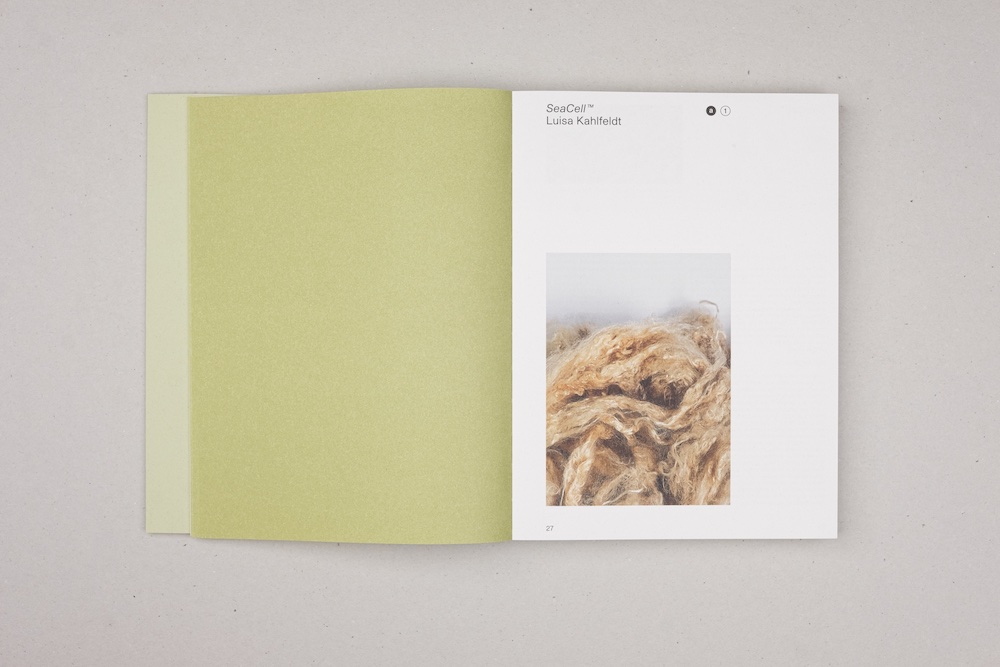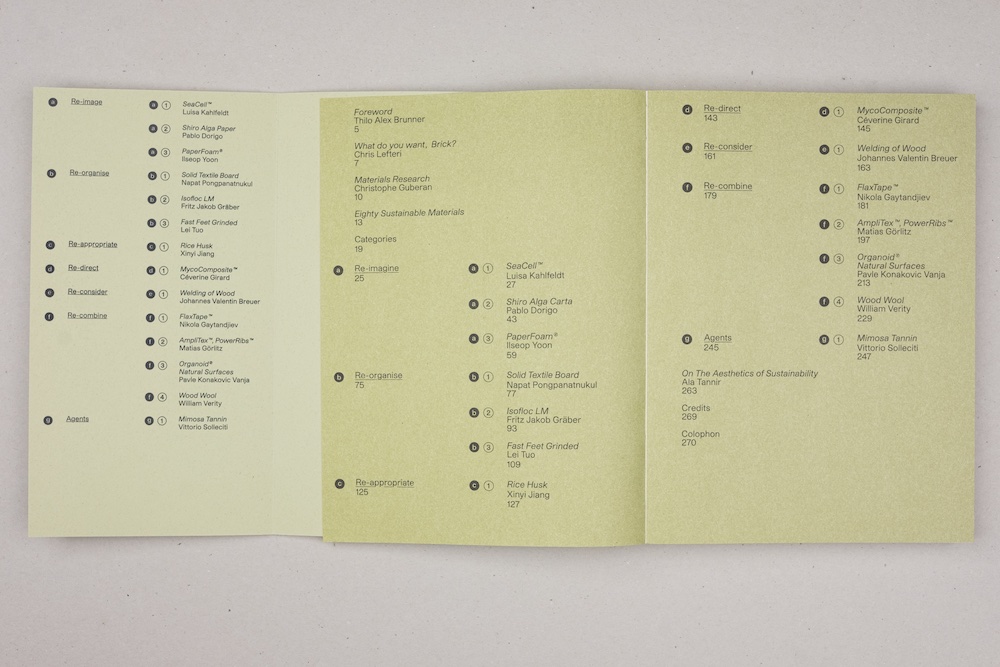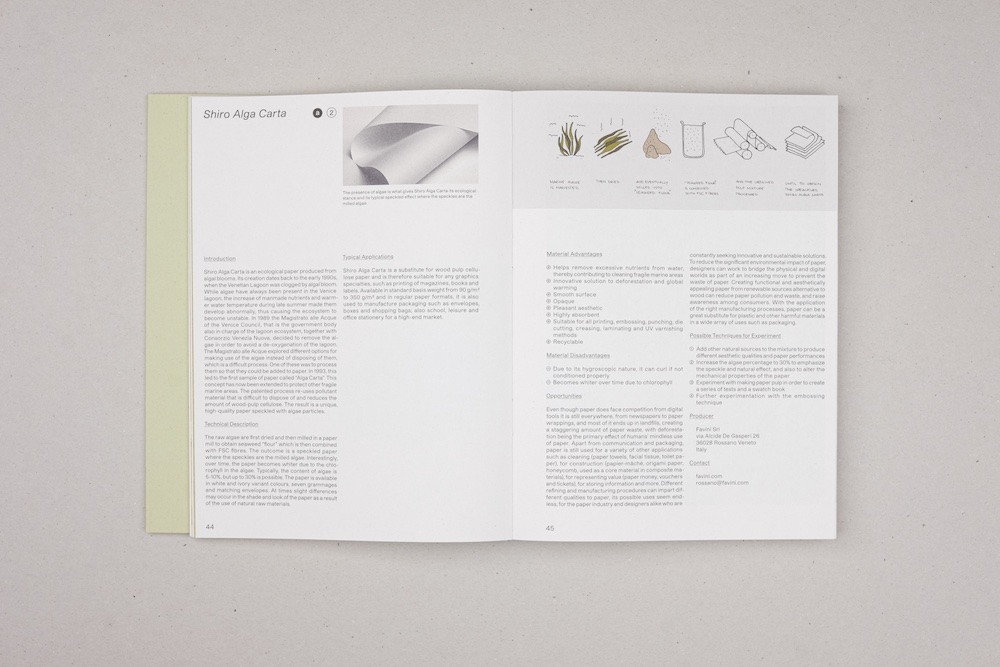The Grafikmagazin is primarily aimed at young designers and students in order to introduce them to the broad horizons of graphic design as early as possible. However, the editorial team also often learns from the new generation and is amazed at the sensational projects that are created in the university environment. This was the case with the book "Aesthetics of Sustainability", which we present in the current issue and which contains the results of a research project at ECAL. Master's students in the field of product design collaborated with renowned material specialists and researchers to redefine the aesthetic potential of the next generation of sustainable materials.
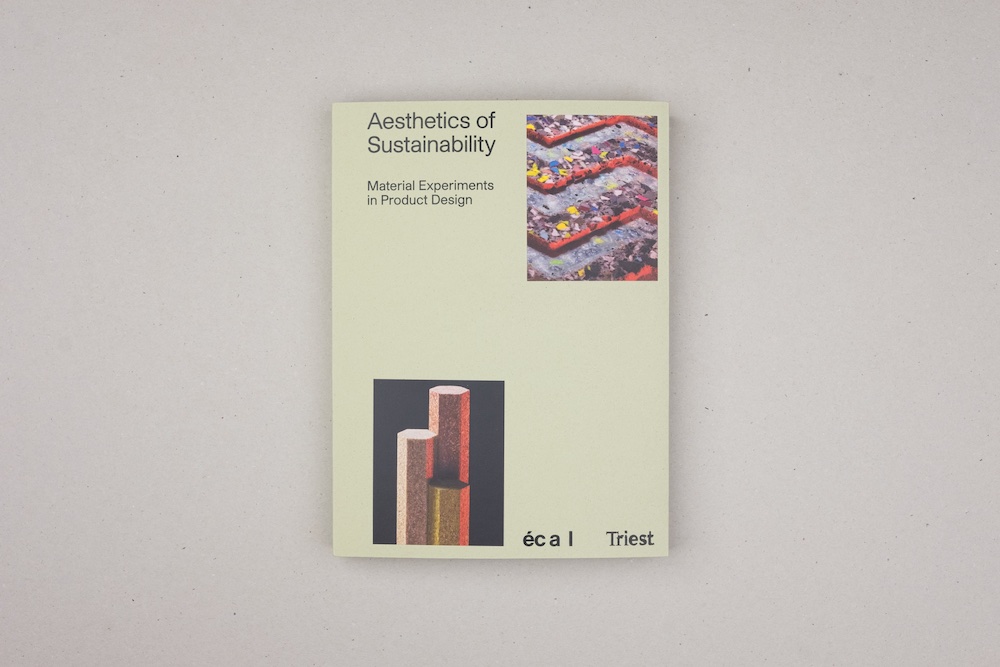
Design must be systemically relevant
Some journalistic pieces inevitably stick in your mind and rumble around for a while. I felt the same way about the Arte documentary "Design is never innocent" by Reinhild Dettmer-Finke, which I would not only like to recommend at this point, but also quote the design theorist Friedrich von Borries interviewed in it: "Design can make alternative ways of life and social change attractive," he pleads. Because yes, design may not be completely detached from consumption and may be a contributor to the global climate crisis, and yet it can appropriate the logic of capitalism for holistic further development.
The brilliant book "Aesthetics of Sustainability - Material Experiments in Product Design" from Triest Verlag pursues a similar idea, using fourteen case studies to provide designers in particular with a range of practical tools and applied knowledge. "The paradigm of the designer who 'only' conceptualizes and shapes products should now be a thing of the past. The role of the contemporary designer is to investigate and modify production processes in the interests of innovation and optimization," writes Swiss editor Thilo Alex Brunner in his foreword. In German: "The paradigm of the designer who 'only' conceives and designs products should be a thing of the past. The role of the contemporary designer is to examine and modify production processes in the interests of innovation and optimization."
In his eyes, designers have a systemically relevant responsibility. With their decisions, they can and must enable circular products long before companies and ultimately consumers come into play.
Leading by example
So far, so theoretical. "Aesthetics of Sustainability" offers much more, namely a neat list of 80 tried and tested materials and substances that the design world can actually make use of. In the course of the book, 14 of these are explored further and applied in case studies. Students and lecturers from the ECAL art school in Lausanne were responsible for the results of the research project, in whose project groups not only experiments were carried out, but prototypes of products were also built. Exciting materials made from plant fibers such as rice husks, hemp, flax or wood, but also from textile waste, recycled paper or rubber granulate were used.
The print object itself sets a good example: "I thought that a book about sustainability should not be produced without sustainable papers, so I did some research with the editors of this book," says art director Federico Barbon. "In the end, we chose the Italian paper brand Favini, which produces a range of sustainable papers - and was also actively involved in the Aesthetic of Sustainability project as one of the companies that provided ECAL MA students with materials to experiment with. It was an obvious choice, so to speak."
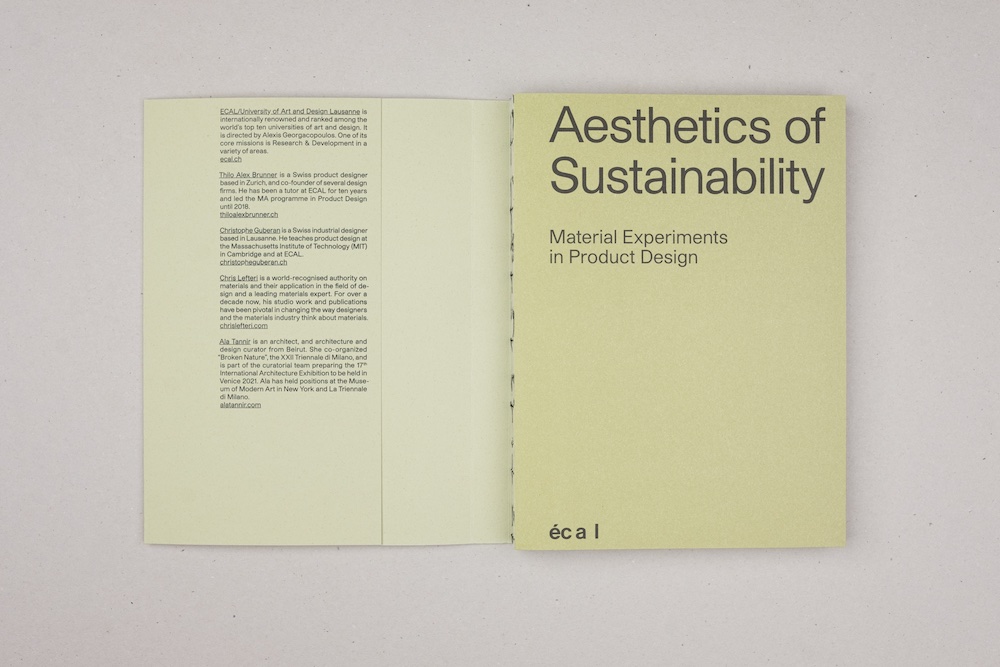
A contemporary aesthetic of sustainability
The inner section was printed on Favini Shiro Alga Carta White in 120 g/m2, a resource-saving paper made from algae. The cover is made from kiwi shells and was printed on 250 g/m2 Favini Crush Kiwi paper. Although it was difficult to prepare the images for printing on such paper, he received active support from Carsten Humme and Frank Berger, who run the Leipzig-based lithography studio Humme and are very good at working with recycled paper.
According to Federico Barbon, he worked on the book for around two years, the same amount of time it took the Master's students to complete their research. In the process, he sifted through huge quantities of images of the materials, from the students as well as from the photographers Nicolas Polli and Maxime Guyon. A nice side effect was that he had to familiarize himself intensively: "The most interesting thing of all was browsing through the huge variety of sustainable materials that could be applied to everyday objects and change the perception of what a contemporary aesthetic of sustainability is." And yes, when you browse through this book, you can vividly imagine this extremely attractive social change that Friedrich von Borries has devised for the design scene...
Text: Sonja Pham
Aesthetics of Sustainability. Material Experiments in Product Design
Thilo Alex Brunner (ed.)
Trieste Publishing House, Zurich
Book design: Federico Barbon
272 pages, approx. 150 illustrations, Swiss brochure with flaps
Texts in English
ISBN 978-3-03863-062-3
€ / CHF 39.00

